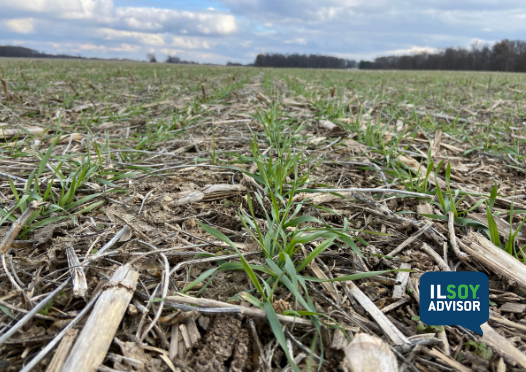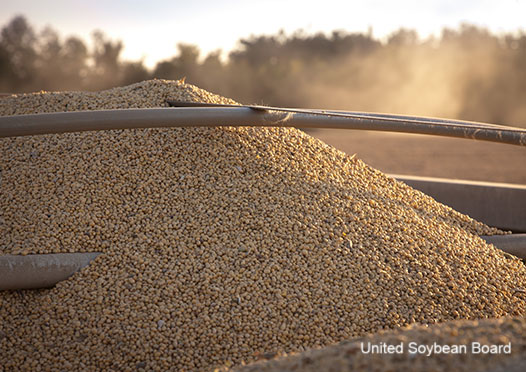ILSOYADVISOR POST
Agronomics: “100 Bags per Hectare”: Learning from Brazilian Soybean Growers
Brazilian yield challenge winners now routinely break 100 bags per hectare, a unit of measure close to 100 bushels per acre (100 bags per hectare equals about 91 to 92 bushels per acre). For the past five years the Brazilian yield challenge winners have been visiting Illinois and Illinois farms, including a half-day to stop at the offices of the Illinois Soybean Association (ISA) to learn about ISA’s Yield Challenge and tell us about their Yield Challenge results.
ISA initiated its Yield Challenge in 2010. The goal was to get farmers to try new ideas and report back results that could be shared with other Illinois farmers. The concept was to try new ideas on a Challenge plot and compare that to conventional practices and see what the yield gain was. Participant farmers team with an agronomist either from a company or an agricultural retailer. ISA has nine Yield Challenge districts, which correspond to NASS’s crop reporting districts. An ISA Yield Challenge winner has broken 80 bushels, but not yet come close to the 100 bushels-per-acre mark.
The Brazilians began their Yield Challenge in 2008/2009. In their program a farmer and his agronomist also put together a set of management practices to improve yield. This is an important element—to enter the contest, a farmer must work with a private agronomist as an integral part of the team. In Brazil there are five regions and five winning teams per region with more than 1,000 entrants annually. If a team believes their yield will be at least 90 bags, they must report it, and an audit team comes out to audit practices and witness the harvest. When they harvested plots in 2009, no one broke 100 bags per hectare, but for the last couple years every winner has been breaking 100 bags, and many are actually breaking 100 bushels per acre (110 bags or more).
 At the ISA meeting each Brazilian team reviewed the practices they followed that enabled them to reach such high yields, and they acknowledged that weather is an important factor. One winner who uses center pivots to irrigate noted that water is a very important factor for him. There were three other commonalities: select the best genetics, plant in narrow rows and apply foliar products. Brazil now has access to Roundup Ready® 2 varieties that come with better yield genetics than the original Roundup Ready 1 soybeans they have long planted. They also plant in narrow rows about 15 to 20 centimeters (6 to 10 inches) to capture more sunlight, but their populations are not super high, only about 120,000 to 140,000 per acre equivalent. But the one thing they all practiced frequently is multiple applications of pesticides and foliar nutrients and stimulants.
At the ISA meeting each Brazilian team reviewed the practices they followed that enabled them to reach such high yields, and they acknowledged that weather is an important factor. One winner who uses center pivots to irrigate noted that water is a very important factor for him. There were three other commonalities: select the best genetics, plant in narrow rows and apply foliar products. Brazil now has access to Roundup Ready® 2 varieties that come with better yield genetics than the original Roundup Ready 1 soybeans they have long planted. They also plant in narrow rows about 15 to 20 centimeters (6 to 10 inches) to capture more sunlight, but their populations are not super high, only about 120,000 to 140,000 per acre equivalent. But the one thing they all practiced frequently is multiple applications of pesticides and foliar nutrients and stimulants.
Soybean rust is a constant threat in Brazil, but controllable with 4 or 5 applications of fungicides. They take advantage of these passes to apply other products at the same time. It is interesting that in the U.S. growers often make a single foliar pass at R3 or beginning pod set, while Brazilians make multiple passes beginning during vegetative growth. One thing they all noted was that they would not be breaking 100 bags if they did not make a final application at R5 or beginning pod fill.
Brazil is a warm tropical country with more heat, disease and insect pressure, and one would not think that it has the potential to produce 100 bushel soybeans, but these winners are proving it year after year.
Agronomist Dr. Daniel Davidson posts blogs on agronomy-related topics. You may reach out to him at davidsond@ilsoy.org with questions.





Comments
Pages
Add new comment